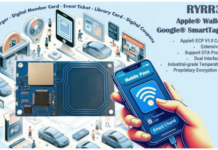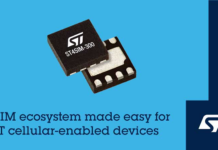
Recent developments made by ARM Holdings and Qualcomm have led several companies increasing their efforts in designing chips for a wide variety of IoT uses. Microprocessor firms have long been preparing for the arrival of IoT solutions, which will cause a shift of focus from their traditional products and services.
ARM Holdings made two acquisitions to beef up its mobile-based IoT chip services. The company acquired Mistbase, which will provide hardware for ARM and NextG-Com, who will work on the software side of the narrow band-based IoT solutions. The narrowband standard is designed to give machine applications low-power connectivity, which is a key component of IoT solutions.
Additionally, Qualcomm revealed that its proprietary Snapdragon 210 chip will have support for LTE and Android Things – an Android-based embedded operating system platform by Google that aims to be utilized on low-power and memory constrained Internet of Things devices at some point in 2017. The development platform of the microprocessor has partnerships with the Intel Edison, Raspberry Pi 3, and NXP Pico. Qualcomm also recently paired its processors with Android Things, which has connectivity with Google Cast Audio, making it ideal for connected home devices.
Qualcomm is also responsible for the creation of Omnitracs, which is a powerful fleet management system that uses ELD or Electronic Logging Devices.
Fleet management solutions are telematics-based services that allow logistics companies to track their operations in real time and increase company productivity.
ELDs are extremely beneficial for fleet management companies. Fleetmatics states that some of the benefits include greatly reducing operational costs and avoiding out-of-date logs. Fleet management solutions continue to gain traction in the field of IoT but unfortunately, Qualcomm stopped its fleet management business, selling it to Vista Equity Partners for $800 million in 2013.
The Internet of Things
It’s worth noting that both ARM and Qualcomm’s microprocessors are leaning on somewhat different connectivity options for the IoT. According to the IoT Executive Survey conducted by Business Insider Global, approximately 60% of network providers use mobile connections, 59% use Bluetooth, 80% use Wi-Fi, and 31% use low-power wide area networks to connect their devices. The developments that were made by ARM and Qualcomm signify that the aforementioned connectivity options will remain key features of the IoT in the near future.
Both microprocessor companies, as experts foresee, will face strong competition from other leading manufacturers. As previously mentioned, both ARM and Qualcomm were the catalysts that initiated microprocessor companies around the world to double their efforts in manufacturing IoT-compatible chips. Tech giant Intel, for one, is not taking the competition lightly, as its IoT department has grown considerably in the past 18 months. In addition, Intel’s Edison and the Raspberry Pi3 remain popular among coders who build IoT solutions, which means that the IoT sector is still anyone’s for the taking.


















